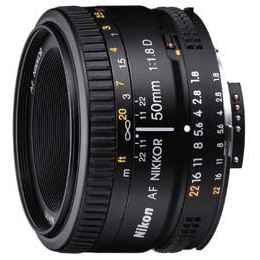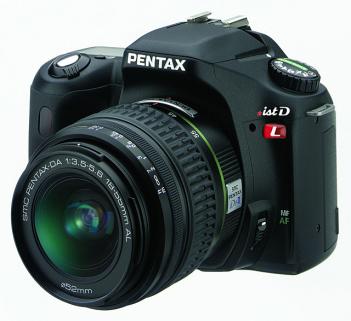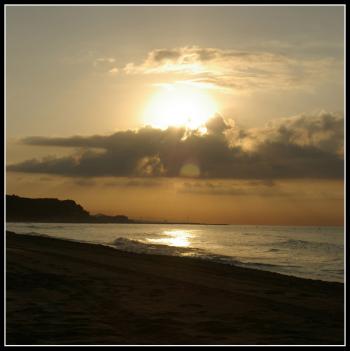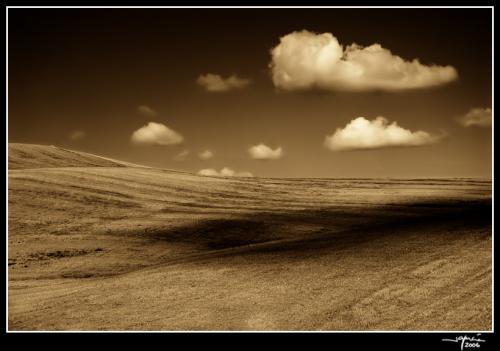Una loma poblada de alcornoques, encinas y quejigos en plena Sierra Morena (Córdoba – España).
Cámara Canon 300D
Abertura f8
Velocidad 1/60sg
Longitud focal 93mm
ISO 200
Desde pequeño he escuchado como mi padre escribía sus trabajos con esta máquina en su despacho. Una máquina que tras varias décadas no deja de funcionar y todavía cumple perfectamente su cometido. Máquinas que pertenecen a un pasado en el que todavía no se conocía la sociedad del consumo que ahora vivimos.
Hoy en día compramos un sistema informático punta y dentro de unos meses está desfasado… en cambio estas viejas máquinas ahí están… imperturbables con el paso del tiempo.
Nowadays we buy a state of the art computer and within a few months it is outdated. In comparison these old machines still survive… unruffled by the passing of time.
Cámara Nikon D200
Flash SB800
Abertura f5
Velocidad 1/60sg
Longitud focal 70
ISO 200
Las bellotas son los frutos por excelencia de Sierra Morena. Las proporcionan las encinas, los alcornoques y los quejigos. Existe la bellota amarga (Quercus ilex subsp. ilex) y la bellota dulce (Quercus ilex subsp. ballota).
Es un fruto seco, apreciado en las regiones de Extremadura y Andalucía, donde su uso principal es la alimentación del ganado porcino.
También son aptas para el consumo humano, que se puede tomar crudo o tostado a la brasa. También se elabora un rico licor destilado de este fruto.
It is a dry fruit, appreciated in the regions of Extremadura and Andalusia, where they are mainly used as foodstuff for pigs.
They are also suitable for human consumption and can be eaten raw or toasted over a barbecue. A delicious spirit is also distilled from this fruit.
Cámara Nikon D200
Abertura f2.8
Velocidad 1/500sg
Longitud focal 50mm
ISO 100
 Un objetivo que no debería faltar en la mochila de los amantes del arte fotográfico por su extraordinaria relación calidad-precio.
Un objetivo que no debería faltar en la mochila de los amantes del arte fotográfico por su extraordinaria relación calidad-precio.
Su gran luminosidad, permite tomar fotografías en lugares con muy poca luz sin tener que utilizar altas sensibilidadedes (ISO) con los consecuentes ruidos.
Su reducido tamaño y peso es otra de sus virtudes.
Objetivo muy asequible con el que se obtienen imágenes de gran calidad.
Otra de sus virtudes es la rapidez con la que enfoca este pequeño-gran objetivo.
Muy recomendado a todo aquel que quiera aprender a componer y encuadrar; una focal fija tan incómoda como un 70mm (aplicando el factor de recorte APS) obliga a moverte mucho para conseguir la foto deseada, sobre todo, si estamos acostumbrados a zooms.
Una de sus pegas es que no trae el parasol de serie.
Sus aberturas de diafragma f1.8, f2, f2.2, f2.5, f2.8, f3.2, f3.5, y f4 nos permiten realizar unos retratos de alta calidad en condiciones de poca luz, con unas profundidades de campo muy reducidas, por lo que aseguramos fondos desenfocados y énfasis sobre el sujeto.
Por su precio (±125 euros vía ebay), una joyita.
Its high luminosity permits photographs to be taken in low light situations without having to resort to high sensitivities (ISO) with a consequent increase in noise.
Its reduced size and weight is another virtue.
It is an affordable lens with which we can obtain images of high quality.
Another virtue is the speed of focussing with this small yet great lens.
Very recommended to all those who want to learn to compose and frame; a fixed focal length so uncomfortable as a 70mm (applying the APS reduction factor) obliges us to move a lot in order to achieve the desired photo, above all if we are accustomed to zooms.
One of its drawbacks is that it a lens hood doesn’t come as standard.
Its diaphragm apertures of: f1.8, f2, f2.2, f2.5, f2.8, f3.2, f3.5, f4 allow us to take portraits of high quality in low light situations, with a very reduced depth of field, so ensuring out of focus backgrounds and an emphasis on the subject.
For its price (±125 euros on eBay), a pearl.
Datos técnicos/Technical Specification
Longitud focal/Focal length: 50mm
Apertura mínima/Minimum aperture: F32
Construcción del objetivo/Lens construction: 10 Elementos en 9 Grupos
Angulo de visión/Angle of view: 46.8°
Hojas del diafragma/Diaphragm blades: 7
Distancia mínima de enfoque/Min. focus distance: 18.9 cms
Ampliación máxima/Maximum enlargement : 1:1
Rosca de filtro/Filter attachment size: 55mm
Parasol/Hood: rosca (no viene de serie) / screw (non standard accessory)
Dimensiones/Dimensions: diámetros máximo 71.4mm x Longitud 64mm
Monturas/Mounting (AF) : Sigma, Canon, Nikon, Pentax, Minolta
Peso/Weight: 315gr
El retrato del estilista italiano Andrea Bellini fue obtenido con este objetivo una tarde de septiembre. Durante el postprocesado únicamente se pasó a blanco y negro y se le aplicó un pequeño ajuste de curvas.
Cámara Nikon D200
Abertura f2
Velocidad 1/320sg
Longitud focal 50mm
ISO 100
Para explicar esta técnica voy a emplear una bonita fotografía titulada Hay harvest, Two, de mi amigo uruguayo Luis Andrade.
Este es el resultado final del retoque digital:
This is the final result of the digital retouch:
En la fotografía original podemos detectar una falta de contraste y una gran diferencia entre la subexposición del fondo (en el que casi no se distinguen los árboles) y la iluminación de los primeros planos.
En la era analógica, cuando el Cuarto Oscuro era el centro del Postprocesado, para obtener copias con una exposición ideal en escenarios con grandes diferencias de luz, durante el positivado con la ampliadora se usaban cartulinas (máscaras) para tapar parcialmente el papel fotográfico durante parte del tiempo de exposición. De esa manera se hacía antes…
Ahora disponemos del Cuarto Oscuro digital: PhotoShop más una casi infinita lista de recursos software.
Nowadays we have at our disposal the digital dark room: PhotoShop plus an almost endless list of software resources.
Hoy voy a intentar explicaros como se puede aplicar un Ajuste de Curvas por Zonas:
1.- Abrimos la imagen a retocar.
2.- Con la herramiente Lazo seleccionamos una de las zonas a ajustar, por ejemplo la parte inferior de la imagen (paja y pacas).
3.- Aplicamos un calado. Selección/Calar… (Selection/Feather). Para estas imágenes pequeñas podemos aplicar un calado de radio 20 px. A mayor tamaño de la imagen, mayor calado.
4.- Duplicamos la zona seleccionada haciendo uso del método abreviado Ctrol+J, a la que llamaremos Zona Inferior.
5.- Aplicamos ajuste de curvas para optimizar la parte inferior de la imagen, para ello accederemos a Imagen/Ajustes/Curvas.
6.- Seleccionamos la capa del fondo en la Paleta Capas.
7.- Seleccionamos la parte superior de la imagen con la herramienta Lazo.
8.- Aplicamos un calado. Selección/Calar… (Selection/Feather) Radio 20px.
9.- Duplicamos la zona seleccionada haciendo uso del método abreviado Ctrol+J, a la que llamaremos Zona Superior.
10.- Aplicamos ajuste de curvas para optimizar la parte superior de la imagen, para ello accederemos a Imagen/Ajustes/Curvas.
11.- Capa/Combinar Imagen.
1.- Open the image to be retouched.
2.- With the Lasso tool select one of the areas to be treated, for example the lower part of the image (straw and bales).
3.- Apply some feathering. Selection/Feather. For small images like this one we can apply a feather radius of 20px. The bigger the image the larger the feathering.
4.- Duplicate the selected area using Ctrl+J which we will call Lower Area.
5.- Apply a curve adjustment to optimize the lower part of the image. Image/Settings/Curves.
6.- Select the background layer in the Palette Layers.
7.- Select the upper part of the image with the Lassoo tool.
8.- Apply some feathering. Selection/Feather. Radius 20px.
9.- Duplicate the selected area using Ctrl+J which we will call Upper Area.
10.- Apply a curve adjustment to optimize the upper area of the image. Image/Settings/Curves.
11.- Layer/Merge Image.
ÁngelCF nos envía un bello atardecer para que la analicemos en la sección Fotoclínica. Tras eliminar el efecto flare, contrastar la imagen con un ajuste de curvas por zonas, nivelar el horizonte, reecuadrar para descentrar el horizonte verticalmente y aplicar un virado a sepia obtuvimos esta imagen:
La fotografía original fue obtenida con una Pentax *ist DL:


Camara Pentax *ist DL
Abertura f9.5
Velocidad 1/1000sg
Longitud focal 40mm
ISO 200
En esta ocasión, para la sección Fotoclínica hemos utilizado una fotografía que captó el noruego Christer Rønning Austad a su novia frente al sol.
Tan sólo apliqué una rotación a la cabeza para eliminar esa leve inclinación hacia la derecha y luego un ajuste de curvas para aportar mayor protagonismo a la silueta.
Una composición simétrica con las manos en dos de los puntos clave de la Regla de los Tercios es una de las razones de que esta imagen sea atractiva visualmente.
I applied a simple rotation of the head to correct the slight inclination to the right and then a curve adjustment to give more emphasis to the silhouette.
A symmetric composition with the hands positioned at two of the key points of the rule of thirds
is one reason why this image is visually attractive.
La fotografía original de Christer:
Cámara Canon 350D
Abertura f29
Velocidad 1/60sg
Longitud focal 30mm
Compensación exposición -2
ISO 100
En muchas ocasiones me han preguntado por la técnica digital que empleo para aportar dramatismo a mis paisajes.
Esta toma la realicé muy cerca de Fernán Nuñez (Córdoba – España -) una tarde de agosto.
This shot was taken very close to Fernán Nuñez (Córdoba – Spain) one afternoon in August.

Cámara Nikon D200
Abertura f6.3
Velocidad 1/1000sg
Longitud focal 55mm
ISO 100
(más…)
Algunos lo recordarán…
Se trata de un gato que se vendío en los 60 y 70 y que cambiaba de color prediciendo el tiempo atmosférico. Uno de esos trastos que curiosamente se convertían en éxitos de ventas sin saber muy bien por qué. De aquella época también es el famoso perro que movía su cabeza y que muchos españoles llevaban en la parte trasera del coche… ahora lo que se lleva es el muñeco del Neng, o la Rana Loca…
Podemos comprobar que el proceso evolutivo es lento, muy lento.
This is a cat which was on sale in the 60s and 70s and which changed colour so forecasting the weather. One of those things which curiously became a hit without anyone really knowing why. Also from that time is the famous dog which nodded its head and which many Spaniards placed in the rear of their car… now it’s typical to have the toy Neng, or the crazy frog…
We can see that the evolutionary process is slow, very slow.
Durante el postprocesado le apliqué una desaturación selectiva para centrar la mirada del espectador en los ojos del gato.
Cámara Nikon D200
Abertura f14
Velocidad 1/200sg
Longitud focal 220mm
ISO 100
Un cambio de timón a tiempo,
fijando un nuevo rumbo,
que nos lleve a buen puerto.
Durante el postprocesado la pasé a blanco y negro utilizando la acción Ilford Delta 400 Pro & 3200.
Cámara Nikon D200
Abertura f7.1
Velocidad 1/1000sg
Longitud focal 116mm
ISO 100
Está estrictamente prohibida la reproducción, parcial o total de los contenidos de esta web, sin el acuerdo previo por escrito del autor.
García-Gálvez © 2005-2020